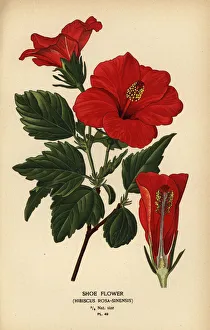Striatum Collection
The striatum, also known as the Shoe flower or China rose, is a fascinating part of the brain that plays a crucial role in various functions
All Professionally Made to Order for Quick Shipping
The striatum, also known as the Shoe flower or China rose, is a fascinating part of the brain that plays a crucial role in various functions, and is like the conductor of an orchestra, coordinating movements and actions. In nature, we can find similar striped patterns in plants such as the Abutilon species and Hippeastrum striatum. These vibrant flowers showcase Mother Nature's creativity with their striking colors and intricate designs. But it's not just plants that display stripes; even animals like the Red vein Indian mallow (Abutilon pictum) and Striped geranium (Geranium versicolor) exhibit these captivating patterns. Curtis British Entomology Plate 295 showcases this natural beauty through detailed illustrations. Interestingly, fossils of extinct mollusks have been discovered with striped shells, further highlighting how common this pattern is in nature. Moving away from nature to our own bodies, digital illustrations often depict the human brain with specific areas highlighted. The striatum and amygdala are two key regions that play vital roles in emotion regulation and decision-making processes. Unfortunately, disorders like Parkinson's disease can affect the functioning of the striatum. Artwork depicting its effects raises awareness about this condition and emphasizes the importance of research for finding effective treatments. Delving deeper into anatomy, artwork showcasing brain synapses gives us a glimpse into how information flows within our brains. The intricate connections within the striatum contribute to its essential role in motor control and reward-based learning.













